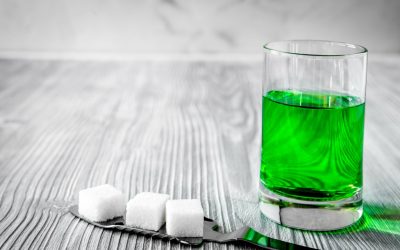Teasdale and colleagues (1995) have proposed a model of depressive relapse which attempts to explain the process of relapse in depression and also the mechanisms by which cognitive therapy achieves its prophylactic effects in the treatment of depression. This model involves an information-processing analysis of depressive relapse. It hypothesizes that following recovery, mild states of depression can reactivate depressogenic cycles of cognitive processing similar to those found during a major depressive episode.
- Advocates of nonabstinence approaches often point to indirect evidence, including research examining reasons people with SUD do and do not enter treatment.
- Relapse prevention programmes addressing not just the addictive behaviour, but also factors that contribute to it, thereby decreasing the probability of relapse.
- Cognitive therapy seeks to identify and challenge maladaptive thoughts and ideas such as I can never be 100% sober, the stress of my job makes me drink, if I only felt better and less stressed I would be able to stop drinking.
You might imagine a relapse as a single event that occurs during a moment of weakness. He is a member of over a dozen professional medical associations and in his free time enjoys a number of different activities. Although now retired from racing, was a member of the International Motor Sports Association and Sports Car Club of America. Dr. Bishop is also a certified open water scuba diver, he enjoys fishing, traveling, and hunting. Laurel, as the Director of Corporate Compliance for USR, is responsible for ensuring that the facility follows all federal and state regulatory requirements, accreditation standards and industry best practices. Laurel has over twenty years’ experience in legal and regulatory affairs in both the public and private sectors.
Treatment strategies in the relapse prevention
AA was established in 1935 as a nonprofessional mutual aid group for people who desire abstinence from alcohol, and its 12 Steps became integrated in SUD treatment programs in the 1940s and 1950s with the emergence of the Minnesota Model of treatment (White & Kurtz, 2008). This model both accelerated the spread of AA and NA and helped establish the abstinence-focused 12-Step program at the core of mainstream addiction treatment. By 1989, treatment center referrals accounted for 40% of new AA memberships (Mäkelä et al., 1996).

Inventory not only the feelings you had just before it occurred but examine the environment you were in when you decided to use again. Sometimes nothing was going on—boredom can be a significant trigger of relapse. Such reflection helps you understand your vulnerabilities—different for every person.
Medical Director, Board Certified in Addiction Medicine
Rajiv had tried on many occasions to stop drinking, but had been unsuccessful. At start of therapy, Rajiv was not confident of being able to help himself (self-efficacy and lapse- relapse pattern). Global self-management strategy involves encouraging clients to pursue again those previously satisfying, nondrinking recreational activities. In addition, relaxation training, time management, and having a daily schedule can be used to help clients achieve greater lifestyle balance. The myths related to substance use can be elicited by exploring the outcome expectancies as well as the cultural background of the client.
Armed with such knowledge, you can develop a contingency plan to help you avoid or cope with such situations in the future. Some people arrange a tight network of friends to call on in an emergency, such as when they are experiencing cravings. Since cravings do not last forever, engaging in conversation about the feelings as they occur with someone who understands their nature can help a person ride out the craving. Others take advantage of the many types of peer support groups that provide, in addition to useful information, the wisdom and coping strategies of others who have faced the same hurdles; it is the ethos of such groups that members support their peers through crises without judgment. That view contrasts with the evidence that addiction itself changes the brain—and stopping use changes it back. Use of a substance delivers such an intense and pleasurable “high that it motivates people to repeat the behavior, and the repeated use rewires the brain circuitry in ways that make it difficult to stop.
Relapse
Anxiety, depression, loneliness, and irritability are all symptoms of this stage. It is inevitable that everyone will experience negative emotions at one point or another. It is not necessarily these natural emotions that cause emotional relapse, but how you cope with them, that does. When someone abuses a substance for a long time, they will have a higher tolerance for its effects. It is for this reason that someone’s tolerance declines following a period of abstinence and that they may overdose if they start using again at the same level as before. Amanda Marinelli is a Board Certified psychiatric mental health nurse practitioner (PMHNP-BC) with over 10 years of experience in the field of mental health and substance abuse.
Results indicated that RP was generally effective, particularly for alcohol problems. Specifically, RP was most effective when applied to alcohol or polysubstance use disorders, combined with the adjunctive use of medication, and when evaluated immediately following treatment. Moderation analyses suggested that RP was consistently efficacious across treatment modalities (individual vs. group) and settings (inpatient vs. outpatient)22. Using a wave metaphor, urge surfing is an imagery technique to help clients gain control over impulses to use drugs or alcohol. In this technique, the client is first taught to label internal sensations and cognitive preoccupations as an urge, and to foster an attitude of detachment from that urge. The focus is on identifying and accepting the urge, not acting on the urge or attempting to fight it4.
Behavioural interventions
Sometimes we must be hard on ourselves, but we must never view ourselves through a lens of hatred and self-loathing. Marlatt notes that one of the most important aspects of handling abstinence violation effect is the need to develop our coping abstinence violation effect definition mechanisms. Family support is critical to long-term success in recovery from a substance use disorder. Explore the benefits of an individualized treatment plan for addiction counseling and why it’s a game-changer on the path to recovery.

The abstinence violation effect is characterized by two key cognitive affective elements. Cognitive dissonance (conflict and guilt) and personal attribution effect (blaming self as cause for relapse). Individuals who experience an intense AVE go through a motivation crisis that affects their commitment to abstinence goals30,31. The Trans theoretical model (TTM), describes stages of behavioral change, processes of change and the decisional balance and self-efficacy which are believed to be intertwined to determine an individual’s behaviour11. His therapist identified strategies to enhance his motivation, to help him engage in therapy, deal with craving, reducing social anxiety, assertiveness and beliefs and positive expectancies about alcohol use, and confidence or sense of self-efficacy in remaining abstinent. The wife was involved in therapy, to support his abstinence and help him engage in alternate activities.



